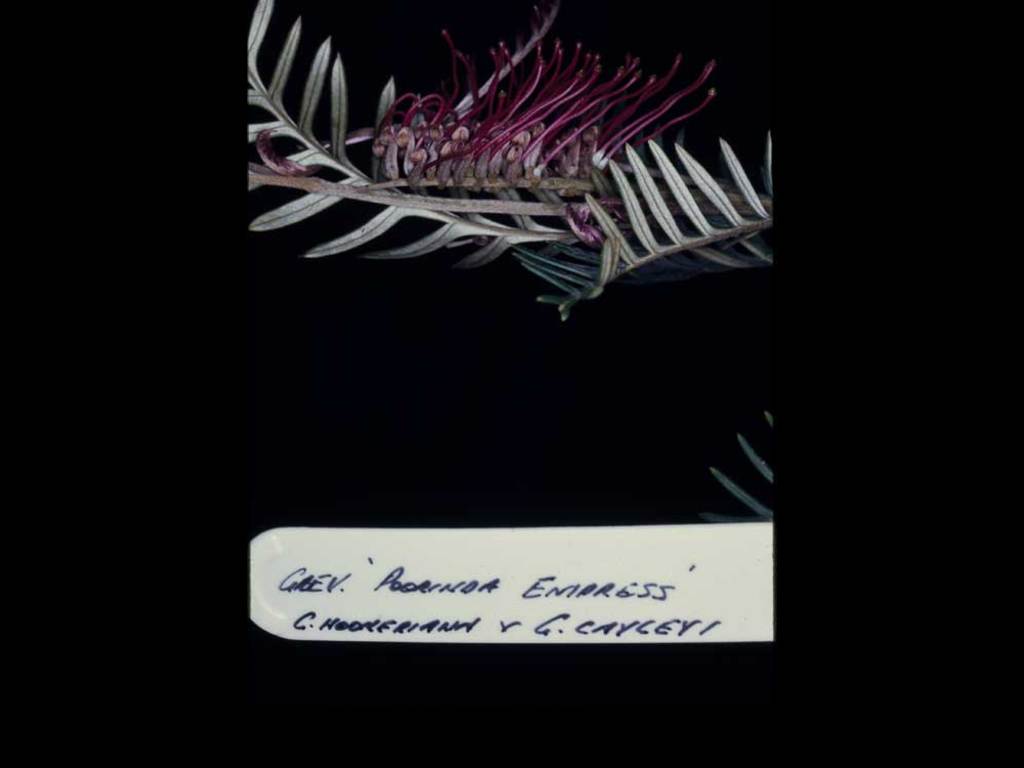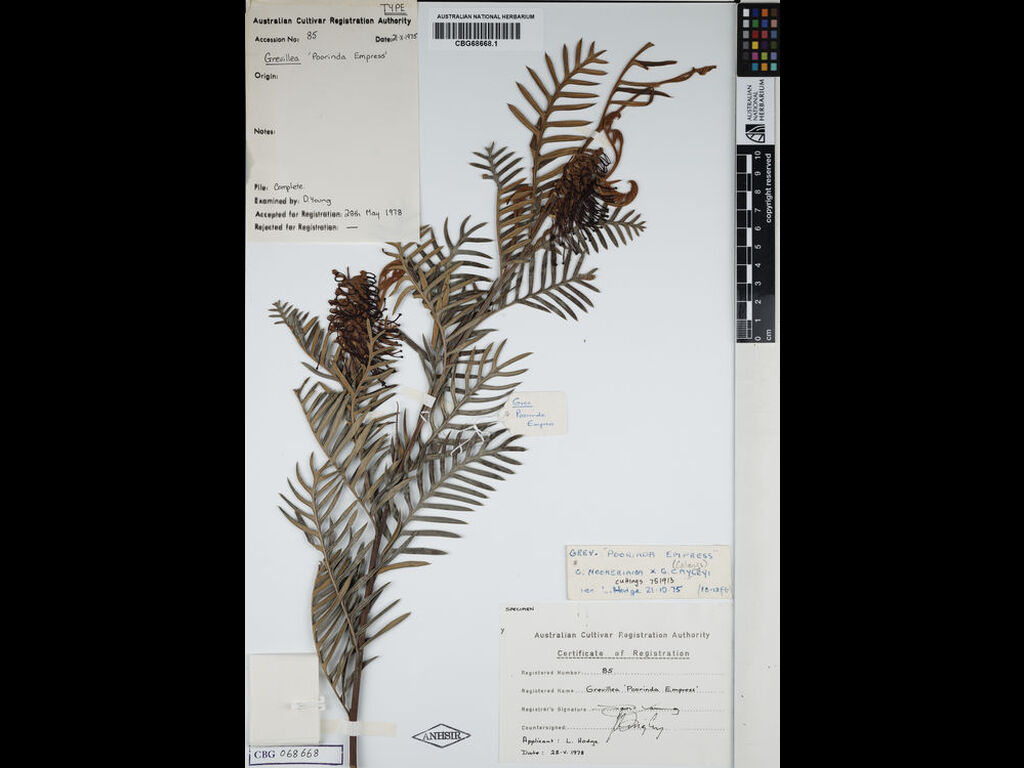Grevillea 'Poorinda Empress'
- File Number
- 85
- ACRA Field Book Number
- -
- Registration Date
- 27/05/1978
- Application Received
- 20/10/1975
- Family
- Proteaceae
- Cultivar Name
- Grevillea 'Poorinda Empress'
- Origin
- Grevillea 'Poorinda Empress' is said to be a hybrid between Grevillea hookeriana and Grevillea caleyi.
- Characteristics
- It is a large compact shrub growing to a height of 3-4m. The leaves are extremely deeply lobed and about 120mm long by about 55mm wide across the lobes. Individual lobes are pungent and narrow being about 3mm wide. The upper leaf surface is dark shiny green whilst the underside is covered with dense silky hairs. The edges of the lobes are rolled under. The flowers are of the "toothbrush" type and are borne terminally on branchlets and occasionally on the main stem opposite a leaf. The perianth is red to purple and 10-12mm long and the deep pink styles about 30mm long. Diagnosis: This cultivar is different from its stated parents in width and shape of the leaf lobes. Grevillea 'Poorinda Empress' has wider lobes than Grevillea hookeriana but narrower lobes than Grevillea caleyi which has distinctly rounded lobes. The styles are the same colour as Grevillea caleyi but darker than Grevillea hookeriana.
- Cultivation
- Grows best in well drained soils. Best in a sunny site but will tolerate some shade. It responds well to light pruning and is drought tolerant and frost hardy
- Publication
- Tully, P. (1977), The Poorinda Grevilleas. Australian Plants 9(73): 214
- Colour Coding
- RHS Colour Chart 1966Inner perianth tube: purple 79A.Style: red-purple 61A
- Propagation
- Cuttings from semi-firm new growth
- Applicant Name
- Mr L Hodge.
- Uses
- As part of a mass planting or mixed in a shrubbery, or as a spectacular feature plant. Attracts nectar feeding birds.
- Availability
- Unknown
- ANBG Accession Numbers
- ACC085; CBG068668.
- NSL ID
- -

